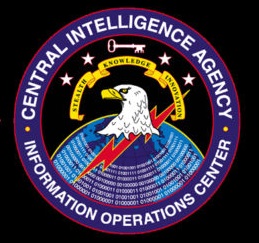
Computer security, cybersecurity, digital security or information technology security is the protection of computer systems and networks from attacks by malicious actors that may result in unauthorized information disclosure, theft of, or damage to hardware, software, or data, as well as from the disruption or misdirection of the services they provide.

This timeline of computer viruses and worms presents a chronological timeline of noteworthy computer viruses, computer worms, Trojan horses, similar malware, related research and events.
Linux malware includes viruses, Trojans, worms and other types of malware that affect the Linux family of operating systems. Linux, Unix and other Unix-like computer operating systems are generally regarded as very well-protected against, but not immune to, computer viruses.
The Windows Metafile vulnerability—also called the Metafile Image Code Execution and abbreviated MICE—is a security vulnerability in the way some versions of the Microsoft Windows operating system handled images in the Windows Metafile format. It permits arbitrary code to be executed on affected computers without the permission of their users. It was discovered on December 27, 2005, and the first reports of affected computers were announced within 24 hours. Microsoft released a high-priority update to eliminate this vulnerability via Windows Update on January 5, 2006. Attacks using this vulnerability are known as WMF exploits.
Watering hole is a computer attack strategy in which an attacker guesses or observes which websites an organization often uses and infects one or more of them with malware. Eventually, some member of the targeted group will become infected. Hacks looking for specific information may only attack users coming from a specific IP address. This also makes the hacks harder to detect and research. The name is derived from predators in the natural world, who wait for an opportunity to attack their prey near watering holes.
A supply chain attack is a cyber-attack that seeks to damage an organization by targeting less secure elements in the supply chain. A supply chain attack can occur in any industry, from the financial sector, oil industry, to a government sector. A supply chain attack can happen in software or hardware. Cybercriminals typically tamper with the manufacturing or distribution of a product by installing malware or hardware-based spying components. Symantec's 2019 Internet Security Threat Report states that supply chain attacks increased by 78 percent in 2018.
Trellix is a privately held cybersecurity company that was founded in 2022. It has been involved in the detection and prevention of major cybersecurity attacks. It provides hardware, software, and services to investigate cybersecurity attacks, protect against malicious software, and analyze IT security risks.

Kaspersky Lab is a Russian multinational cybersecurity and anti-virus provider headquartered in Moscow, Russia, and operated by a holding company in the United Kingdom. It was founded in 1997 by Eugene Kaspersky, Natalya Kaspersky and Alexey De-Monderik. Kaspersky Lab develops and sells antivirus, internet security, password management, endpoint security, and other cybersecurity products and services.
Cyber spying, cyber espionage, or cyber-collection is the act or practice of obtaining secrets and information without the permission and knowledge of the holder of the information using methods on the Internet, networks or individual computers through the use of proxy servers, cracking techniques and malicious software including Trojan horses and spyware. Cyber espionage can be used to target various actors- individuals, competitors, rivals, groups, governments, and others- in order to obtain personal, economic, political or military advantages. It may wholly be perpetrated online from computer desks of professionals on bases in far away countries or may involve infiltration at home by computer trained conventional spies and moles or in other cases may be the criminal handiwork of amateur malicious hackers and software programmers.
An advanced persistent threat (APT) is a stealthy threat actor, typically a state or state-sponsored group, which gains unauthorized access to a computer network and remains undetected for an extended period. In recent times, the term may also refer to non-state-sponsored groups conducting large-scale targeted intrusions for specific goals.
Stuxnet is a malicious computer worm first uncovered in 2010 and thought to have been in development since at least 2005. Stuxnet targets supervisory control and data acquisition (SCADA) systems and is believed to be responsible for causing substantial damage to the nuclear program of Iran. Although neither country has openly admitted responsibility, multiple independent news organizations recognize Stuxnet to be a cyberweapon built jointly by the United States and Israel in a collaborative effort known as Operation Olympic Games. The program, started during the Bush administration, was rapidly expanded within the first months of Barack Obama's presidency.
Cyberwarfare by China is the aggregate of all combative activities in the cyberspace which are taken by organs of the People's Republic of China, including affiliated advanced persistent threat (APT) groups, against other countries.
Duqu is a collection of computer malware discovered on 1 September 2011, thought by Kaspersky Labs to be related to the Stuxnet worm and to have been created by Unit 8200. Duqu has exploited Microsoft Windows's zero-day vulnerability. The Laboratory of Cryptography and System Security of the Budapest University of Technology and Economics in Hungary discovered the threat, analysed the malware, and wrote a 60-page report naming the threat Duqu. Duqu got its name from the prefix "~DQ" it gives to the names of files it creates.
Browser security is the application of Internet security to web browsers in order to protect networked data and computer systems from breaches of privacy or malware. Security exploits of browsers often use JavaScript, sometimes with cross-site scripting (XSS) with a secondary payload using Adobe Flash. Security exploits can also take advantage of vulnerabilities that are commonly exploited in all browsers.
Cyberweapons are commonly defined as malware agents employed for military, paramilitary, or intelligence objectives as part of a cyberattack. This includes computer viruses, trojans, spyware, and worms that can introduce malicious code into existing software, causing a computer to perform actions or processes unintended by its operator.
The following outline is provided as an overview of and topical guide to computer security:
Lazarus Group is a hacker group made up of an unknown number of individuals, alleged to be run by the government of North Korea. While not much is known about the Lazarus Group, researchers have attributed many cyberattacks to them between 2010 and 2021. Originally a criminal group, the group has now been designated as an advanced persistent threat due to intended nature, threat, and wide array of methods used when conducting an operation. Names given by cybersecurity organizations include Hidden Cobra and ZINC or Diamond Sleet. According to North Korean defector Kim Kuk-song, the unit is internally known in North Korea as 414 Liaison Office.

Vault 7 is a series of documents that WikiLeaks began to publish on 7 March 2017, detailing the activities and capabilities of the United States Central Intelligence Agency (CIA) to perform electronic surveillance and cyber warfare. The files, dating from 2013 to 2016, include details on the agency's software capabilities, such as the ability to compromise cars, smart TVs, web browsers including Google Chrome, Microsoft Edge, Mozilla Firefox, and Opera, the operating systems of most smartphones including Apple's iOS and Google's Android, and computer operating systems including Microsoft Windows, macOS, and Linux. A CIA internal audit identified 91 malware tools out of more than 500 tools in use in 2016 being compromised by the release. The tools were developed by the Operations Support Branch of the CIA.
This is a list of cybersecurity information technology. Cybersecurity is security as it is applied to information technology. This includes all technology that stores, manipulates, or moves data, such as computers, data networks, and all devices connected to or included in networks, such as routers and switches. All information technology devices and facilities need to be secured against intrusion, unauthorized use, and vandalism. Additionally, the users of information technology should be protected from theft of assets, extortion, identity theft, loss of privacy and confidentiality of personal information, malicious mischief, damage to equipment, business process compromise, and the general activity of cybercriminals. The public should be protected against acts of cyberterrorism, such as the compromise or loss of the electric power grid.

Sandworm is an advanced persistent threat operated by Military Unit 74455, a cyberwarfare unit of the GRU, Russia's military intelligence service. Other names for the group, given by cybersecurity researchers, include Telebots, Voodoo Bear, IRIDIUM, Seashell Blizzard, and Iron Viking.





